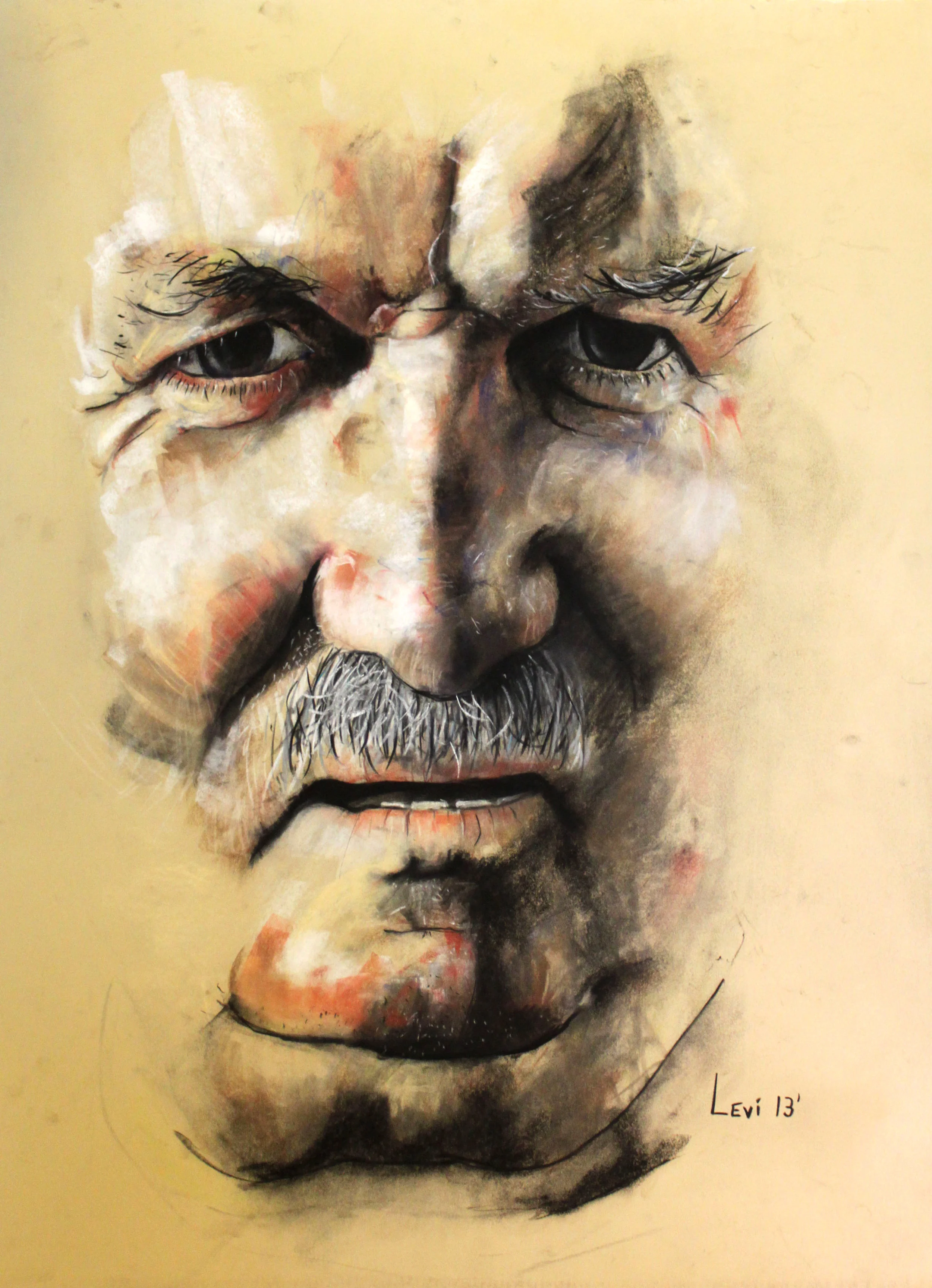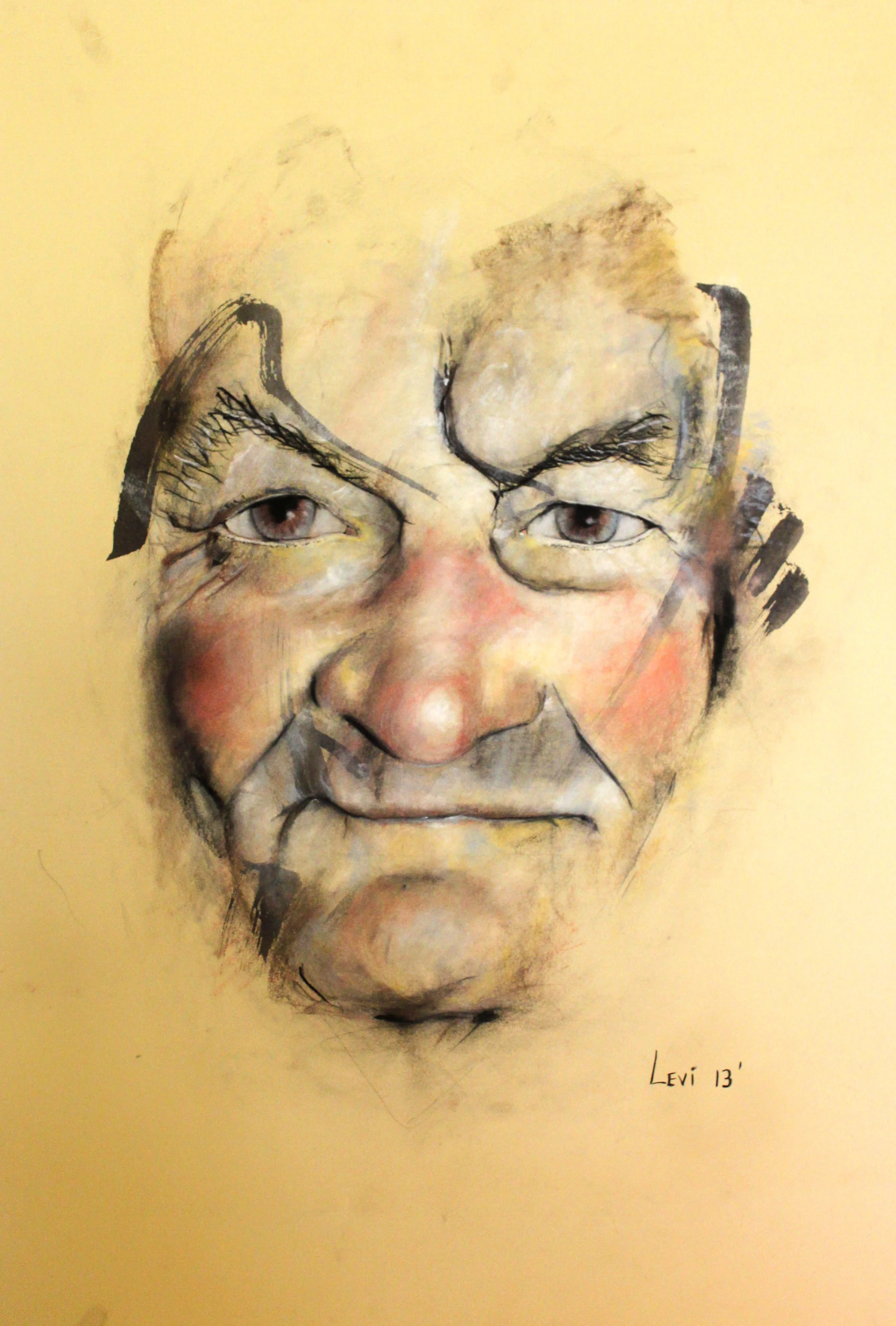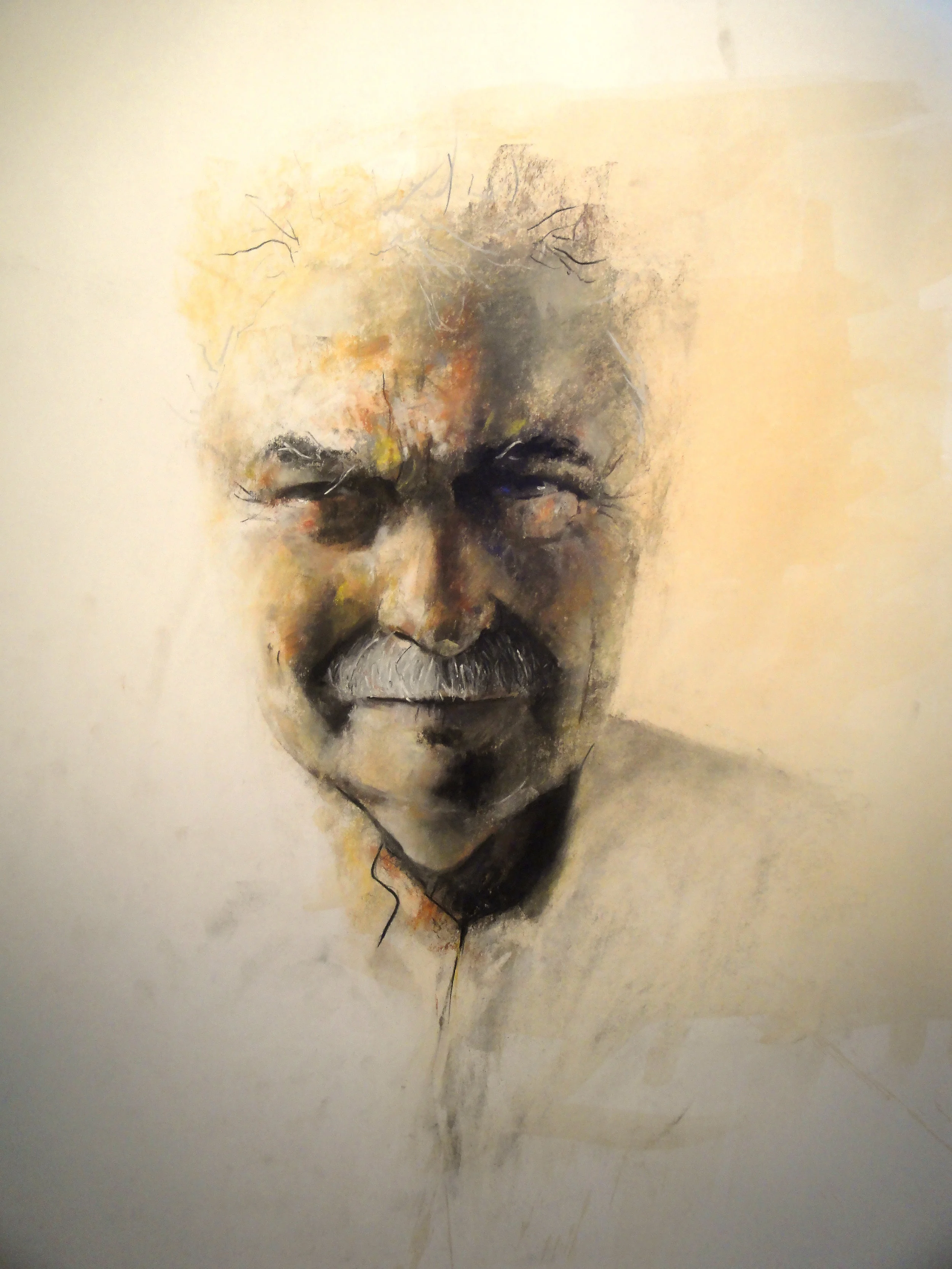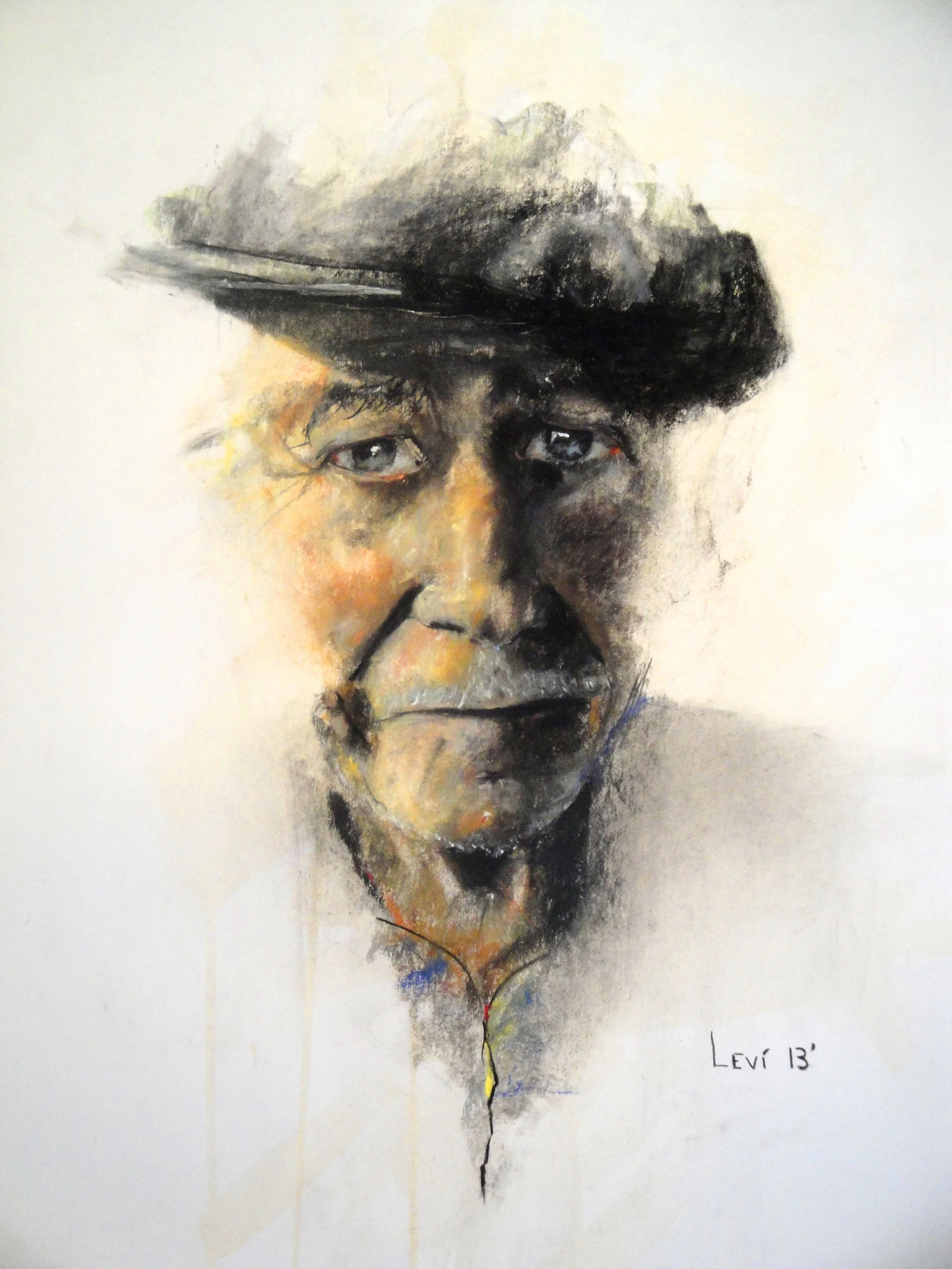Human history in the Valley of the Dordogne, France, dates back 25,000 years to when local Homo sapiens were hunting, fishing and painting incredible art on Dordogne’s cave walls. Over the years, generations of humans and their interactions with the local environment have shaped the space’s identity. One of the more recent generations of humans, a retired cohort of native farmers, holds the last bit of knowledge about traditional farming approaches in the region. Alas, there exist no new generation to replace them. Traditional farming, a dying practice, will soon, like the cave art, belong only to the valley’s history. The younger farmers are now completely reliant on the machinery utilized by the industrialized agriculture movement: they own larger lands, bigger tractors, and higher debt. These changes in farming practices are slow, and the older generations of farmers describe it as destiny. Furthermore, growing tourism in the region has begun replacing farming as the local economy. The transformations are not challenged. They are accepted. But the value of traditional farmers’ participation in creating the gorgeous identity of the Dordogne is immeasurable, which I did not fully grasp until I left Dordogne and began living in the United States. Only after being away a year and looking at the Dordogne from a different vantage point do I realized the significance of the transition phase we are in. I returned home this winter with the goal of seizing, through the interviews of retired farmers, how the change in agriculture practices has shaped the new identity of the Dordogne over the last hundred years.
I biked to Monsieur Albert’s house unannounced on a Saturday morning hoping that he would be home. I had never met him before, but always saw him working in his field on the way to elementary school. When I arrived he was watering the small oak trees he had recently planted. We sat down around the table inside his house, the same, he told me, on which he had butchered a wild boar the previous weekend. When I asked him about the benefits of human progress he said referring to an older native: “If he was still alive he would be 125 years old now. When I was young he told me: ‘Progress will kill us.’ And, well, he was probably right.” I am still unsure if by “us” he meant humans or the farmer community, perhaps both.
Suited to the hilly valley terrain of the Dordogne, tractors started replacing horses after World War II when they became more affordable. Since then, they have increased in size, technicality, and price. This change goes hand in hand with the increased land owned by individual farmers, for though bigger tractors allow them to work more efficiently, they also force them to work more in order to pay off expensive equipment. In 50 years, typical farm size has grown from 20 to 30 to 125 hectares. As such, there are fewer farmers, and the small remaining ones are outcompeted by the larger neighbors and ultimately forced to sell their land.
The shift towards industrialized agriculture has not only increased plantation size but also begun threatening local biodiversity through the extensive use of pesticides. The loss of ecotones between small cultivations of wine, sunflowers, corn, and wheat, correlates with the decreasing population of rabbits and woodcock, and ultimately wild boar and deer. This not only negatively impacts the biodiversity of the region, but also the important hunting tradition upheld by farmers.
Every Sunday, most farmers in the region go hunting for the whole day. Though the actual hunting takes only a few hours, the ritual takes longer, because they spend the rest of the day discussing local politics, drinking wine from their own production, and eating smoked ham and bread. They stand 40 meters apart from each other along the roadside: distinctive hats on their heads, rifles strapped around their backs. At the end of the day they load into their old Citroën 2CV to look for the dogs that got lost running after the game. Recently, hunting regulations have become more severe and complicated, and each animal, according it its size, sex, and geography, is assigned a specific time during which it can be hunted. The farmers that I interviewed often joke that there are more guards implementing regulations than there is game. Additionally, the price of the average hunting license has increased from $50 to over $300, and consequently younger generations are less keen on keeping up this tradition central to the farming community.
The introduction of tractors into agriculture has changed the social life of farmers in other ways as well. Before, farmers would all work on the same farm together, rotating farms daily, in order to maximize efficiency during harvest season. Working together was quite enjoyable, and led farmers to depend on one another during the harvest season; this dependency in turn fostered the development of strong social bonds. These tight bonds also kept them from creating trouble in the village or rivalries with one another. Monsieur Pemendrant, one of the eight farmers I interviewed, recalls the day when he learnt that one farmer had been cheating with another farmer’s wife. When the rumor spread, no one was interested in contributing labor to that farmer. Because he could not do all the work on his farm alone, he was forced to leave the region and settle elsewhere. The problems between the farmers from a region were dealt with in the fields. Nowadays, the tractor that made everything ‘easy’ has also made such connections difficult: farming has become individualistic and competitive.
The popularization of television additionally served to reinforce this individualistic lifestyle. Spaces that farmers had created to connect with each other slowly disappeared, as nights playing card games at each other’s house were replaced by evenings watching television. Similarly, the decline of church attendance meant that farmers had less opportunity to converse and connect. In Dordogne, we have gone from more priests than churches, to more churches than priests. And that is not all. In the 1950s, there were four agricultural shows in Le Bugue, a nearby town. Farmers from all over the region congregated in the day to sell products and livestock and in the light to go to the bar, discuss local issues. My neighbor Monsieur Fort puts it like this: “It was an opportunity for the Jacque and for the Paul to catch up on each other’s life.” This opportunity no longer exists: an annual motorbike show, frequented largely by tourists, replaced it.
Some tourists like the Dordogne so much that they decide to buy property in the region and renovate or build a new house. Their contribution to the space’s identity often conflicts with the farmers’ more tradition vision. In Toulouse, a large city in the south of France, a farmer was put on trial by his neighbor who complained about the noise of his rooster in the morning. Similarly, in the Lot-et-Garonne, a department in the south of the Dordogne, a breeder was fined $6, 000 because the smell of his cows distracted neighbors. He was also asked to keep his cattle 100 meters away from any habitations; making some of his land unusable and costing him a great cost. These two examples show how the perception of farmers in society is not particularly positive, especially since they became a minority group. The farmers complain about the ugly new houses that ‘grow like mushrooms’ and some of their new foreign neighbors that won’t learn French. One farmer told me: “and now, there is the homosexual marriage. My wife and I we are against that, if they can adopt a child, who will play the role of the dad, or of the mother?” This conservative opinion that often conflicts with the immigrant populations’ ideals underlines the complexity of this space.
However, there are some exceptions to my examples of farmers struggling with the new populations. The Dutch, and to some extent, the British, constitute the biggest group of tourists in the region. If you drive on the roads between June and August you will be surprised to see that more than half of the license plates are foreign. For me, growing up with two Dutch parents in this region has put me in a position to better understand both sides. While I have both a Dutch and a French nationality I do not strongly identify with either countries. In the Dordogne I was never treated like an outsider but never felt entirely French either. I remember during the summer in my childhood, Monsieur Fort, the neighboring farmer, would take my brother Stan and I cutting the hay in the fields in the summer. In the fall, he would take us to the vineyard and help him harvest grapes for his wine. Stan and I would take our shoes off, climb in a large wooden barrel, and trample on the grapes with our feet. I am grateful for Monsieur Fort for introducing us to his knowledge’s of this place-including the land, climate, and animals-that has been passed down by many generations of farmers. Looking back, I think it is his love for the valley of the Dordogne that drove him to introduce two foreign boys, my brother and I, to the environment.
When I ask about the future of agriculture in my neighborhood the only response is that there is none. The hilly topography combined with the restrictions in size and location of cultivations because of tourism, makes it impossible for farmers to effectively cultivate over very large areas of land. The older generation laments that new farmers learn their skills in schools with strong focus on modern techniques, GMOs, pesticides, and herbicides, but little premium on practical exposure. Monsieur Andre, on the other hand, told me that when he was young he learnt all his skills from his dad on the farm: he saw a tree growing from small to tall.
Many think the simplicity of this life superior. Monsieur Fort dreams of going back 200 years to see what farming in the region looked like at that time… to see where the fields were located, what was cultivated, and what the climate was like. He says life is not better than it was 50 years ago. Though we are more efficient, we have hot showers, and bathrooms, the life of the Dordogne farmer has become more stressful, individualistic, and filed with administrative work. “Your generation,” he says, “is born with the cellphones and computers; you do things faster he says. A house that doesn’t have a dishwasher is a weird house, but the quality of life has really gone down.
* * *
Monsieur Pemendrant’s 80-year-old grandfather discovered the cave of Bernival in 1898. In the winter, as he was walking in the woods, a landslide had opened a small hole in the ground through which water vapor raised out. Inside the cave he found a history treasure: over 100 paintings and carvings dating from 12, 000 to 14, 000 BC, including some the very rare image of a human face. The farmer accompanied me and a few other tourists to this cave that is now recognize as part of the French heritage. During the visit Monsieur Pemendrant explained that he found the place so special that he wants to share the experience with anybody interested. The experience was like nothing else. This is the only cave I visited that had not been severely redesigned to facilitate tourist access. He lighted the calcareous walls with a hold lamp powered by a battery he carried around in a worn out leather bag. The five of us had to bend and squeeze, and did not come out of the cave as clean as we came in. Maybe because of it, my understanding of the meaning of the art was exceptionally profound. Sometimes you have a moment of deep realization of something very simple, but it suddenly appears as extremely profound. Humans were here 15,000 years ago. 15,000 years ago! Drawing and leaving behind what is for me the most inspiring artwork. Likewise, the retired cohort of native farmers has left on my understanding of the identity of the valley of the Dordogne an indelible mark. With the end of this farming generation their particular way of living and interacting with the local environment comes to a close as the region’s attributes are molded to satisfy an expanding tourist market. This serves as more of an observation than a critique. However I do hope that my generation – native or foreign – will be able to integrate into our lives some of the values honored by the women and men who carved the fields of this valley with their bodies and souls.










